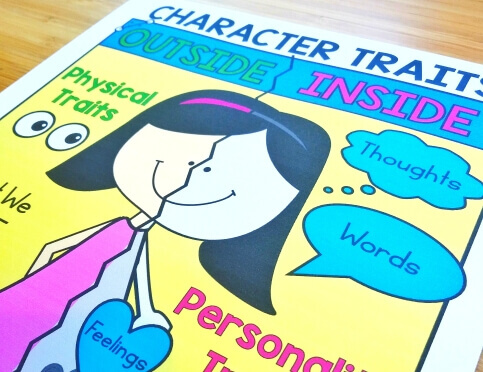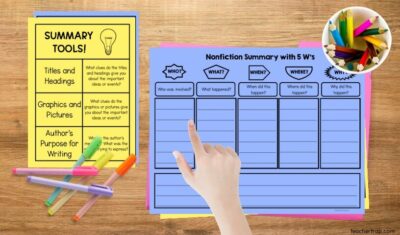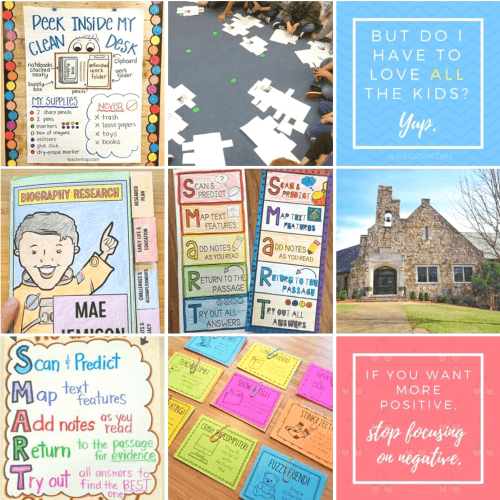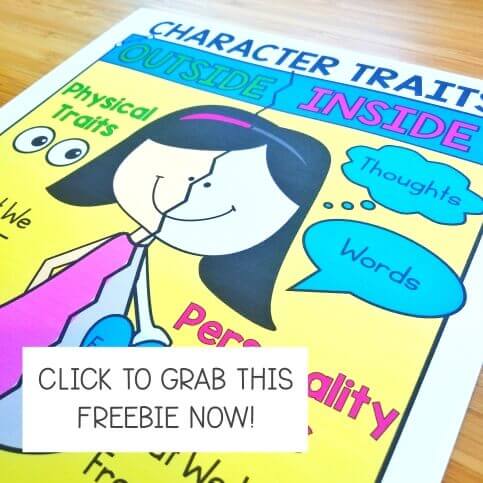Love seeing your students engaged and excited about their learning? This post is for you! The benefits of integrating technology in the classroom go far beyond just teaching 21st century skills. For elementary students, technology integration can boost learning outcomes and student behavior while incorporating digital literacy skills and cross-curricular connections. Digital Research Projects offer a flexible and accessible path for students of all grades and abilities to explore meaningful topics and apply literacy skills in a real-world context with minimal teacher prep!

Benefits of Integrating Technology in the Classroom
- Personalized Learning: Online tools make it easier to create individualized learning paths, with many programs incorporating adaptive lessons that target specific learning needs. Digital Research Projects can be differentiated by topic, depth, length, and the amount of support.
- Immediate Feedback: Rather than students waiting days or even a week to receive feedback on their work or progress, teachers can provide real-time support and ongoing feedback using digital platforms.
- Increased Student Engagement and Better Behavior: When students are engaged in learning, both academic progress and behavior improve! Technology can add challenge, novelty, and opportunities for creativity that kids are excited about their work.
- Collaboration: Online tools like Google apps can promote teamwork and communication skills as students work together to solve, write, create, or explore.
Why Teachers (and Students) Love Digital Research Projects
Digital Research Projects combine all the benefits of technology in the classroom with the skills needed to gather accurate information before presenting it concisely to others. Students collaborate and support each other as they apply their literacy skills in a meaningful context.

- Flexibility: Digital projects are incredibly flexible and adaptable to student needs and classroom schedules. These research projects can be completed in days or weeks, with students working independently, in partners, or groups. They can be differentiated by level of challenge or student interest and can even serve as special projects or work for fast-finishers.
- Student-Led: Although students may need some initial instruction or guidance throughout, digital research projects are largely self-directed. Students must problem-solve, support each other, and use their creativity.
- No Prep: Sometimes teachers need high-interest, low-prep work that will keep students active and on task while they manage small groups, administer assessments, or maybe even stay home sick! Digital research projects are amazing for those last weeks before a break or the end of the school year.
- Engagement: My students’ best behavior always comes when they are engaged and excited about a creative task. It’s astonishing how quiet and focused they become during our research projects, and how many groan when it’s time to wrap up for the day.
- Research and Digital Literacy Skills: Digital literacy becomes more essential every day. The ability to find accurate information online, to recognize unreliable sources, and to organize information collected takes time to hone and develop.
Integrating Technology in Reading and Writing
Digital Research Projects require students to draw on important literacy skills, from reading comprehension to writing clear paragraphs. Students must use text features like headings and charts as they seek specific information and must determine the meaning of unfamiliar vocabulary words.
In the Biography Digital Research Projects, students choose an important figure to study and then create an online presentation that shares key information. The projects are perfect for integrating Social Studies and Literacy, while adding the novelty of a digital platform.
Integrating Technology in Science
Digital Research Projects not only integrate technology into Science but also combine literacy and research skills. With the Solar System Digital Project, students research one specific planet (or more!) with partners or small groups. Projects are then presented to the class to share learning.
In the Digital Animal Research Projects, students select an animal and gather information about habitat, diet, adaptations, life cycle, physical features and more, depending on the teacher’s requirements. This work can be done solely online or through both print and text sources but allows students to dig into a topic that truly sparks their curiosity!

Tips for Using Digital Research Projects
Students these days are astoundingly tech-savvy, which makes integrating technology in the classroom easier than ever, but here are a few tips for making the projects unfold seamlessly.
- Research Sources: Although the project is created online, both print and online resources can be used for research. For online research, provide a list of links or safe sites rather than just letting students use the Google Search bar, as it can lead to some unexpected images and links! In the Digital Research Projects, I provide links within each template to give options for safe sites. Another option is to have students use a kid-safe search engine such as Safe Search Kids. This type of search engine still requires students to sort through results and determine which are the most reliable, but it gives kid-friendly sites. If you use this option, you’ll want to teach students about ads on websites and how to tell the ad from the content.
- Student Choice: My students are most engaged when they get to choose their topic, but I’ll often give choices within certain parameters. For example, I might select a variety of animals to represent different habitats and expect partners to choose from those options, ensuring that we cover every habitat. Or during our American Revolution Unit, students must choose someone from that time period for their Biography Research Project.
- Group Work: I’ve used Digital Research Projects for independent, partner, and group work, finding that all have benefits and drawbacks. I’ve also found value in letting students choose how they’d like to work, as some students prefer to work alone, while others like the support of teammates. For group work, I’d recommend keeping groups to only 3 or 4 so that all members can stay involved during the work.
- Guidance: If this is your students’ first online research project, I recommend providing modeling and guidance. This might look like spending 5-10 minutes a day modeling how you would go about researching, gathering information, or adding it to the project template. Once students have gone through the process, they are mostly self-sufficient the next time.
- Note-taking: Students can take notes directly on the slides by using one device for research and one for typing up notes. Some students prefer writing their notes on paper and then typing their ideas afterward. I allow students to choose.

Digital Research Projects are one of my favorite ways to integrate technology in the classroom while keeping my students engaged and excited about learning. These projects spark their curiosity, build problem-solving skills, and foster collaboration in ways that always surprise and delight me! I love having these in my back pocket for unpredictable times of the year, like the hours after state testing, the week before winter break, or the last few weeks of school.
















